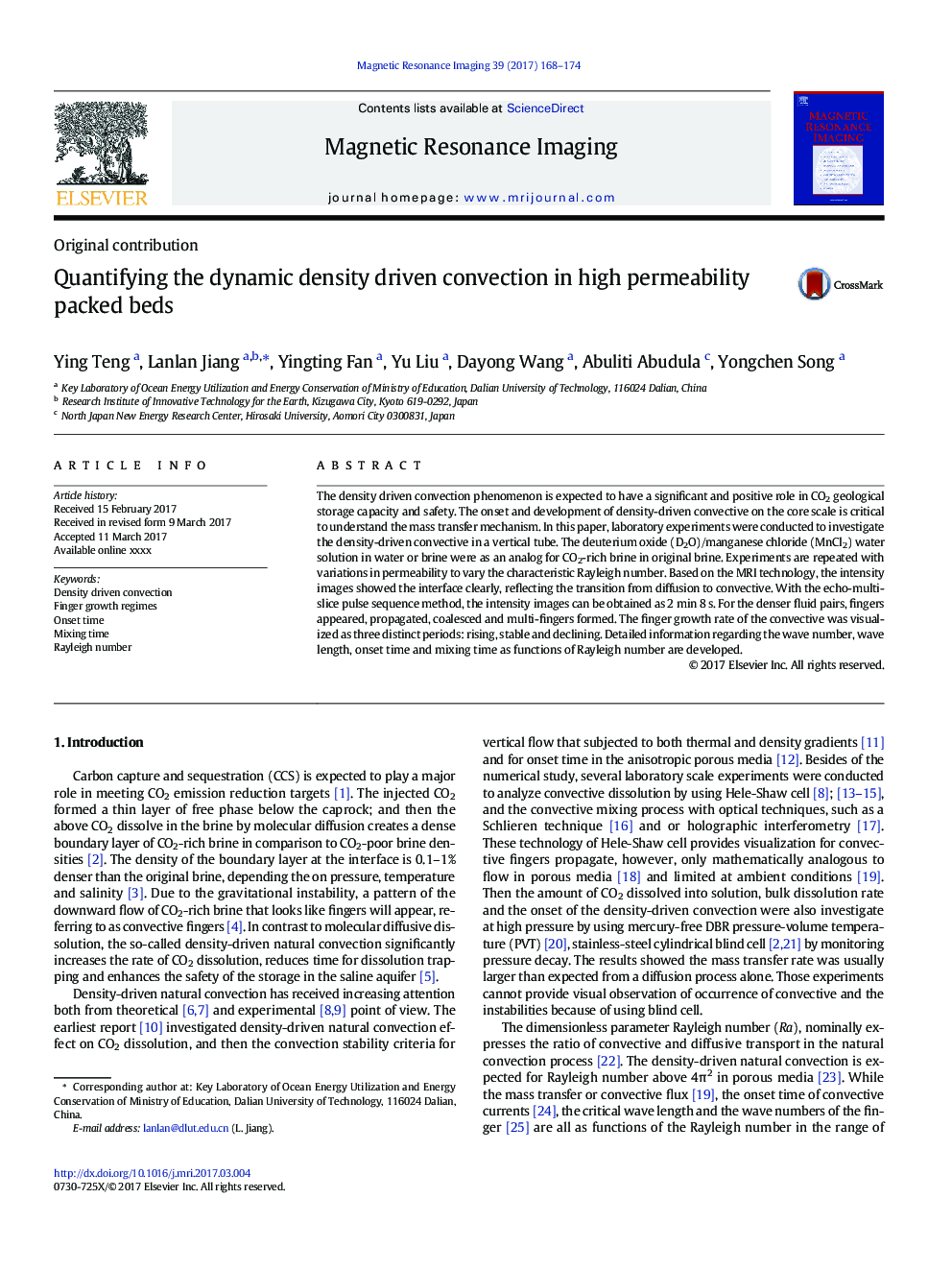| Article ID | Journal | Published Year | Pages | File Type |
|---|---|---|---|---|
| 5491463 | Magnetic Resonance Imaging | 2017 | 7 Pages |
Abstract
The density driven convection phenomenon is expected to have a significant and positive role in CO2 geological storage capacity and safety. The onset and development of density-driven convective on the core scale is critical to understand the mass transfer mechanism. In this paper, laboratory experiments were conducted to investigate the density-driven convective in a vertical tube. The deuterium oxide (D2O)/manganese chloride (MnCl2) water solution in water or brine were as an analog for CO2-rich brine in original brine. Experiments are repeated with variations in permeability to vary the characteristic Rayleigh number. Based on the MRI technology, the intensity images showed the interface clearly, reflecting the transition from diffusion to convective. With the echo-multi-slice pulse sequence method, the intensity images can be obtained as 2Â min 8Â s. For the denser fluid pairs, fingers appeared, propagated, coalesced and multi-fingers formed. The finger growth rate of the convective was visualized as three distinct periods: rising, stable and declining. Detailed information regarding the wave number, wave length, onset time and mixing time as functions of Rayleigh number are developed.
Keywords
Related Topics
Physical Sciences and Engineering
Physics and Astronomy
Condensed Matter Physics
Authors
Ying Teng, Lanlan Jiang, Yingting Fan, Yu Liu, Dayong Wang, Abuliti Abudula, Yongchen Song,
